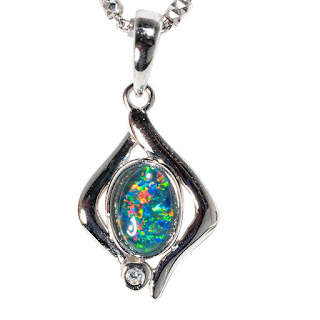Nature's Fireworks - A Beginner's Guide to OPAL - Part 5 Types of Opal
During the Cretaceous period (65-140 million years ago) deserts were an inland sea teeming with life. The sea gradually receded laying the foundation of silica that would form the opal of today. During the mid-tertiary period, changes in the earth's climate caused quantities of soluble silica to be released from the sediment, finding its way down through cracks and faults, eventually hardening over time. This hardening continued to form common and precious opal.
The vivid array of colour in the opal is from the uniform alignment of the silica particles. The size of the particles determines the colour as light refracts through it.
Unlike many other gemstones, opal doesn't occur in lengthy veins or concentrations. Instead, small clusters may be spread over a vast area and divided into precious or gem quality and common. Opal is found in many varieties, but precious opal represents only a small percentage of the total mined.
Black Opal:
Black opal is the rarest and most valuable of all opals and is generally found as a bar of various colours in a dark body. In addition, there is also Semi black and black Crystal.
Black opals from Lightning Ridge, Mintabie and Andamooka in Australia account for 99.9% of all opals in the world.
Boulder Opal:
Boulder opal, found in the fields of Queensland, is classified as a solid opal and occurs as thin veins of precious opal in cracks and cavities of ironstone. During processing, the stone is cut leaving the natural host rock as backing. The opal occurs as either a solid piece of colour on top of the ironstone or showing as flashing flecks of colour throughout the stone.
Light Opal (White or Milky):
Light opal can be found in Coober Pedy, Andamooka and Mintabie in South Australia. A full range of colours can be found, with the background colour either white or light blue.
Crystal Opal:
As the name suggests, crystal opal has a brilliant, crystal appearance, with a translucent or transparent background. When viewed on a dark surface the colours spring to life.
Picture Opals:
Picture opals are so called because their pattern forms an image of an object or person. A good imagination is sometimes required to visualise the object/person.
Fire Opal:
The term "Fire opal" is commonly used to describe the clear orange crystal opal that comes from Mexico, some of which have a play of colour, although many have just an orange or reddish base with no play of colour.
Shop Now: https://australianopaldirect.com/
.jpg)

Comments
Post a Comment